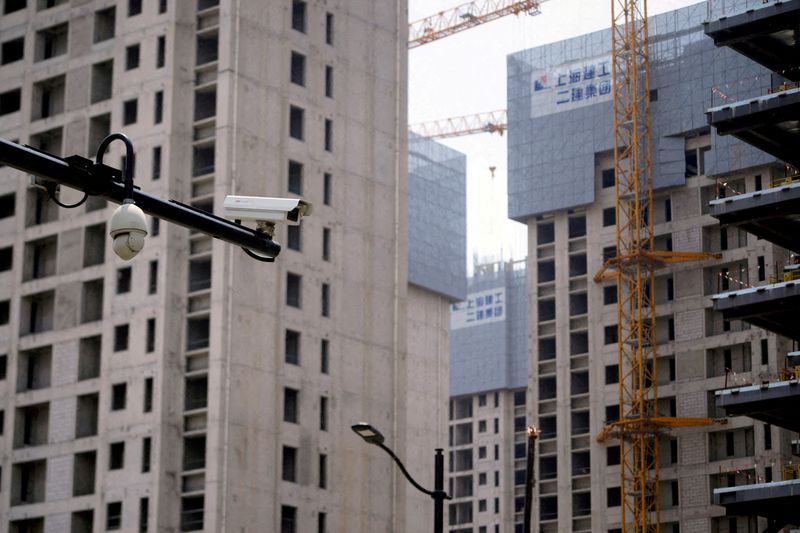By Ankur Banerjee and Harish Sridharan
SINGAPORE (Reuters) - Fund managers and investment advisers are returning to battered Asian bond markets, betting on a rebound in 2023, though with a wary eye on the risks of defaults and a global recession.
Their optimism on markets that have been falling for nearly two years has been sparked by a host of measures China has announced to prop up its property sector. The sector's bonds are a big chunk of the emerging-market high-yield class of bonds and also account for much of China's $20 trillion bond market.
"Because of the prolonged distress, I think there is a lot of mispricing. And you can afford to have your (risk) threshold high and get involved," said Amy Kam, senior portfolio manager at Aviva (LON:AV) Investors in London, adding that to get an outsized return you need "some guts and understanding of companies' operations and liabilities."
"You can pick and chose, just because everything is really, still, quite cheap," Kam said. "If you go in there you have to assume that property will normalize eventually. Very crudely, you either make 20% or you lose 20%."
Besides China's property measures, its early moves to ease stringent pandemic controls have spurred some risk-taking in Asian investments. There has also been support from hints of a peak in policy tightening by the U.S. Federal Reserve, whose aggressive rate rises this year have also hammered high-yield bonds by causing spreads to widen.
More widely in Asian emerging-market bonds, "we have not seen this yield level in at least 10 years, so it's an interesting time, to be able to take the opportunity to finally have a decent income from fixed income," said Leonard Kwan, portfolio manager of T. Rowe Price's dynamic emerging markets bond strategy.
According to ICE (NYSE:ICE) BofA indexes, corporate investment-grade dollar bonds across Asia are averaging 5.6%, down from 6.6% last month; for China alone, the average is 5.5%, down from 6% in November. High-yield dollar-denominated corporate bonds in Asia are yielding about 14%, compared with nearly 20% in October.
(Yields on HY and IG corporate https://fingfx.thomsonreuters.com/gfx/mkt/gdpzqqyzjvw/Yield-Asia%20HY%20and%20IG.png)
(Asia HY v US HY https://fingfx.thomsonreuters.com/gfx/mkt/dwvkddrwapm/Asia%20HY%20Index%20v%20US%20HY.png)
RECESSION RISKS
The main worry keeping investors from rushing into the dollar bond market is the prospect of a global recession coupled with possibilities of defaults, prompting some investors to stay on the sidelines and others to scout for healthier balance sheets.
"While we have participated in the rally (because of existing positions), we haven't increased," T. Rowe Price's Kwan said, referring to Chinese property bonds.
"The repair of the sector will be a multi-year process."
Fears of an economic slowdown could trigger some rotation of bond investments from Europe or the U.S. into Asia, according to DBS foreign exchange and credit strategist Chang Wei Liang.
"Investors who have invested a large amount in South Asia, in India or Indonesia may now reallocate to North Asia with China opening up," he said.
(Asia IG and HY indexes https://fingfx.thomsonreuters.com/gfx/mkt/znvnbbeynvl/Asia%20IG%20and%20HY%20Indexes.png)
Macau gaming and Indian renewables are the preferred high-yield bonds for some, who saw favourable policies for the sector.
Guan-Yi Low, head of Asia-Pacific fixed income at M&G Investments, recommended a conservative strategy focused on maturities of three to five years, with a preference for asset management companies in China and infrastructure and renewables in India.
Investment banks and fund managers, however, overwhelmingly chose investment-grade (IG) issuers over high-yield ones, since riskier assets become riskier still in a recession.

"We believe 2023 will be the year for Asia IG, given its once-in-a-decade yield, cheap spread valuation, lower U.S. Treasury yield and supportive fund inflows," Morgan Stanley (NYSE:MS) strategists said, expecting Asia IG to generate a total return of 9.8% next year.
(Asia corporate IG & HY returns https://fingfx.thomsonreuters.com/gfx/mkt/jnpwyyeqrpw/HY%20and%20IG%20returns.png)